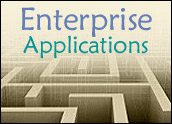
This article draws on two discrete data sets: BI deployments of over 270 respondents in Aberdeen Group’s April 2009 benchmark report, Moving Past Spreadsheets: What You Need to Know about BI Deployment Strategies; and the telecom lifecycle management solutions of 140 respondents in the March 2009 benchmark report, Telecom Lifecycle Management: The C-Suite Guide to Saving Millions in Corporate Costs.
This data will be used to contextualize the value of integrated business intelligence functionalities and their ability to drive additional cost savings for enterprise IT and telecom departments.
In addition, this context will be used to analyze Veramark’s recent announcement of the Verasmart Performance Advisor, a new set of integrated BI tools designed to control telecom and IT costs.
The Importance of Pre-Integrated BI
As telecom and information technology expense management solutions have matured, the enterprise has demanded additional value from these solutions. It is no longer acceptable for these solutions to simply process bills or aggregate inventory and usage data.
To gain visibility into actionable opportunities that increase business value, these solutions must provide analysis tools that allow business leaders to optimize their organization’s telecom and IT infrastructure costs. These analytical tools and dashboards require best practices regarding BI deployments to maximize the value gained.
Aberdeen data from Aberdeen’s April 2009 benchmark report, Moving Past Spreadsheets: What You Need to Know about BI Deployment Strategies, demonstrates that the top performing companies have been successful in spreading BI functionality throughout the organization into more job roles and functions in order to progress toward a pervasive deployment of BI capabilities.
One of the key functionalities used to gain additional visibility was the ability for enterprise applications to have some form of pre-integrated BI rather than maintain dependence on a third-party BI product for metrics and analytics.
Organizations using some form of pre-integrated BI product report a usage for line-level knowledge workers almost double that of organizations using products from third-party BI vendors. Considering that this categorization defines the procurement, finance, and telecom analysts that typically analyze telecom expenses, this finding is vital to understand how to best empower these employees to optimally analyze this corporate spend (Figure 1).
In addition, pre-integrated BI solutions are also more likely to result in the use of the automated generation and delivery of reports across company sizes. In particular, companies between 100 and 2,500 employees are over twice as likely to have automated report capabilities if they have pre-integrated BI capabilities.
This finding is particularly important because IT and telecom expenses have increasingly affected the mid-market as application delivery, bandwidth and mobility concerns have filtered down to smaller companies. The ability to automate relevant reports is key to gaining visibility quickly (Figure 2).
Integrating BI and IT Expense Management
Aberdeen’s March 2009 benchmark report, Telecom Lifecycle Management: The C-Suite Guide to Saving Millions in Corporate Costs, defined the top 20 percent of respondents as Best-in-Class, the middle 50 percent as Industry Average, and the bottom 30 percent as Laggard respondents. (Best-in-Class organizations accomplished, and were defined by, the following: a 40 percent decrease in landline network expenses per user, a 38 percent decrease in landline voice expenses per user, and a 40 percent decrease in mobility expenses per user).
These three sets of respondents were separated by their ability to reduce their total telecom and network expenses after installing a telecom lifecycle management solution. Best-in-Class respondents were able to reduce telecom costs by 39 percent while Laggards actually increased their costs by 1 percent after implementing a solution (Figure 3).
One of the defining characteristics of Best-in-Class companies is that they were more than twice as likely as Industry Average companies to adopt automated BI dashboards and analytics tools for telecom expenses. This automation allowed employees to directly access reports without the need to manually create and analyze data.
This automation was also useful for providing timely dashboards to line-of-business managers and executives with historical and real-time information needed to provide financial forecasts and analysis. In contrast, Laggards had almost no adoption of any BI capabilities in conjunction with their TLM solution.
Because of this usage of automated BI, Best-in-Class companies were also more than twice as likely to provide role-based analytics for their telecom expenses. Forty-four percent (44 percent) of all Best-in-Class companies had the ability to provide specific BI analytics for varying roles ranging from line-level workers to functional managers to executives.
These various levels of visibility allow organizations to analyze their expense management capabilities in a business-relevant manner that reflects the operational, tactical, and strategic perspectives that these expenses may represent (Figure 4).
Verasmart Performance Advisor in Context
Given that enterprises are more likely to use pre-integrated BI in enterprise applications and that these BI capabilities are capable of reducing telecom and other IT expenses, Veramark’s recent announcement of the Verasmart Performance Advisor, which is scheduled for release on June 30, 2009, represents a useful set of integrated business intelligence (BI) tools that provide dashboards and other analytic reports to finance, procurement, and IT managers seeking to control costs and realize the documented savings associated with these expense management solutions.
Verasmart Performance Advisor accesses the expense information for the entirety of assets and services related to voice, data and wireless in the organization. This expense data is collected by the Veramark Communications Management Suite and then displayed to the company as a series of prebuilt dashboards and graphs that condense the organization’s spend into easily digestible bits of visual information.
By taking this approach, Veramark allows end-users to directly interact with its enterprise application suite instead of forcing employees to use a third-party BI tool to analyze these expenses.
In addition, Veramark’s professional services can customize Verasmart Performance Advisor based on the specific needs of the organization to effectively provide additional visibility in an automated fashion. Based on this customization, this product can then interact with other business applications, such as enterprise resource planning and customer relations management software, to provide greater insight into strategic business processes.
By delivering easily understood and actionable information, Verasmart Performance Advisor maximizes the value of the highly granular and detailed telecom expense information collected through telecom expense management systems.
Recommended Actions
For customers seeking to control telecom and IT spend, the following actions are recommended:
- Develop or acquire a full telecom lifecycle management solution to manage the enterprise telecom and network deployment. This system should include the full network, telecom and wireless inventory, as well as contract information and a full database of billing and usage information. This information serves as a baseline to provide the enterprise with actionable items.
- Choose a solution with a pre-integrated BI solution in place. This pre-integration will allow the organization to achieve the level of adoption that it wishes to achieve. In addition, this will improve the organization’s ability to provide automated reporting capabilities to display the summation of thousands of telecom invoices without requiring significant manual processing.
- Implement role-based assignments for telecom and IT-related spend reports. Even the most intelligent BI solutions will not provide benefit unless the company accurately defines which employees should be accessing each report. Otherwise, companies have simply replaced one form of information overload with another.
Hyoun Park is a research editor in Aberdeen Group’s technology markets group. David White is a senior research analyst in the business intelligence practice.
















































